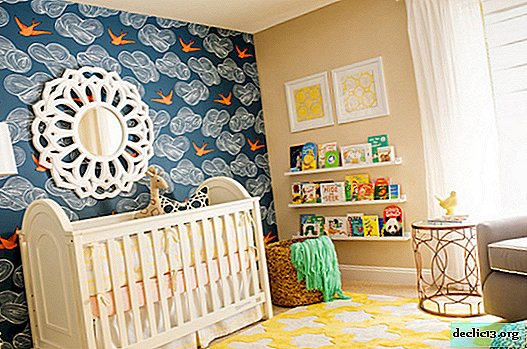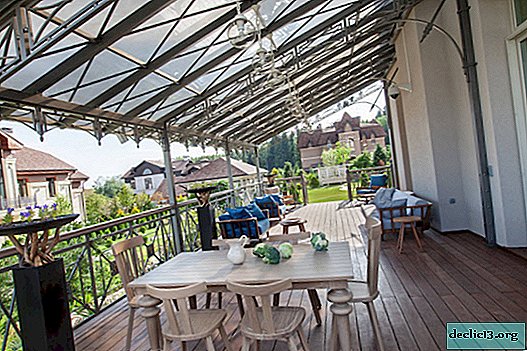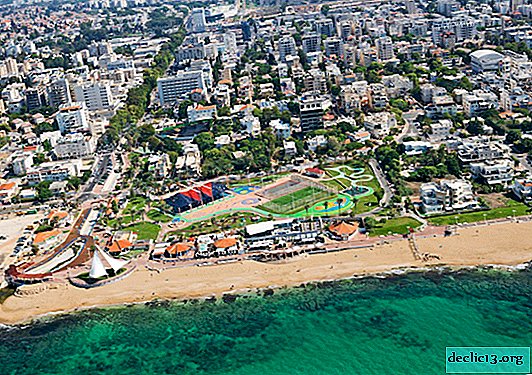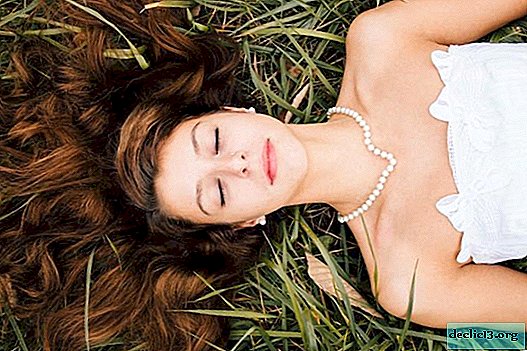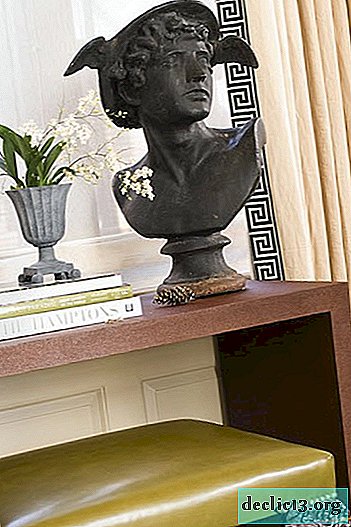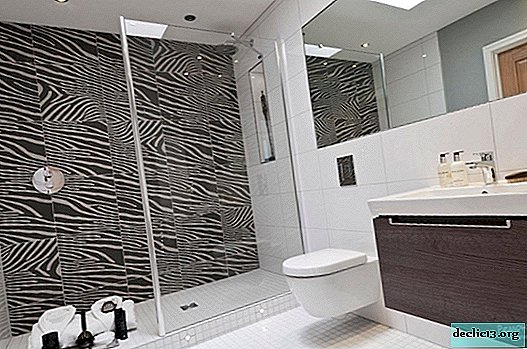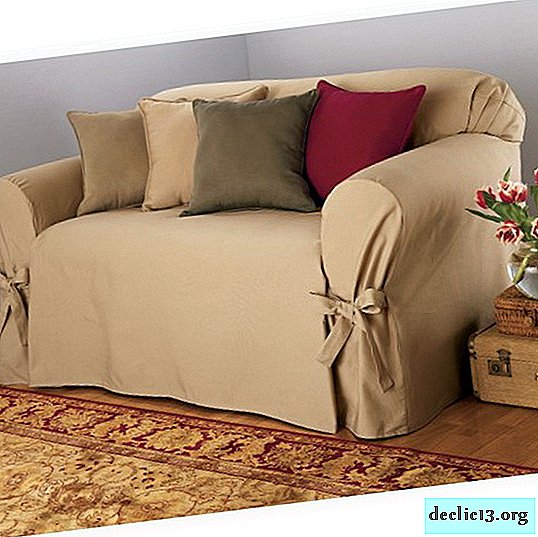The residence of the kings in Munich - the richest museum in Germany
The Munich residence, which is the largest inner city palace in Germany, has not only a rich history, but also a special color that distinguishes it from many other castles. In order to go around the entire territory of this complex, it will take more than one day, so today we will conduct only a small sightseeing tour.
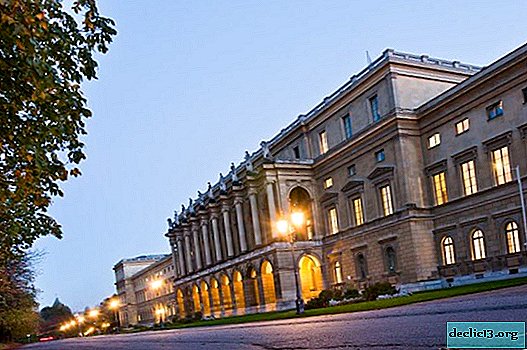
General information
The residence of the Bavarian kings in Munich (Germany) is a huge palace complex, which for 500 years belonged to the representatives of the ruling Wittelsbach dynasty. Currently, it includes 130 halls, 3 museums (the Old Residence, the Chambers of the Kings and the Gala Hall), 10 internal patios, as well as a park with fountains, the Treasury and the ancient theater. All this beauty is in the very heart of the city, so its visit is part of the obligatory tourist routes.
Being one of the largest palace complexes in the country, the Munich residence impresses not only with its scope, but also with the appearance of the buildings and their interior decoration. It should be noted that all the buildings of the complex are built in different architectural styles - there is a Renaissance, Baroque, Classicism and Rococo.

In addition, on the territory of the palace complex, you can see the Pharmaceutical garden, broken in the middle of the garden, the Coin Museum, which offers a unique monetary collection, and a beautiful church, which is the best example of South German Rococo.
Currently, the premises of the residence of the kings in Munich are used for concerts, receptions and other celebrations. In addition, the Bavarian Academy of Sciences is located here.
Short story
The first palace in Munich was built in 1385. It was the Neoveste Gothic castle, in which the kings of Bavaria hid during the times of popular uprisings. Over the next few centuries, the fortress experienced several cardinal changes. To be more precise, with each new ruler she received a new hall, palace or garden. Thus, under Albrecht V, the Kunstkamera and the Celebration Room were attached to it, under Maximilian I - the Wittelsbach Fountain, the Palace Church and the Imperial Courtyard, and under Charles VII - the Cabinet with mirrors, the Main bedroom and the Luxurious room.

The Baroque era gave the Munich residence the Little Chapel, the Golden Hall for the reception of ambassadors, the Heart Cabinet and the Bedroom. In addition, a picturesque garden, an art gallery and a library decorated in the best Italian traditions appeared in it. One of the last structures of this amazing place was the rococo theater, designed exclusively for the king and his retinue. More than 1000 trees brought from the foothills of the Alps have been spent on its construction.
Unfortunately, neither the Winter Garden has survived to our days, on the vast territory of which hundreds of exotic plants are located, nor the artificial lake built on the roof of the Festive Hall. Both were demolished shortly after the death of King Louis I.
Over time, Neuveste not only changed its original appearance, but also completely lost its original function. So, on the site of an old and unremarkable castle, a magnificent royal residence appeared, able to compete with the most beautiful architectural structures of Old Europe. In 1918, Bavaria received the status of a republic, so the kings were forced to leave the Munich residence. And 2 years later, a museum was opened in it.
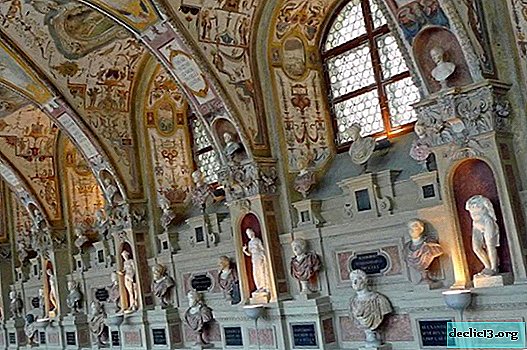
The royal palace in Munich suffered a lot of trials, but it suffered the most during the Second World War. Then from the once luxurious residence there was only a foundation and mountains of construction waste. The reconstruction of the complex, which began after the end of the military conflict, took more than a dozen years and ended only in 2003. And most importantly, the staff of the residence managed to return almost all museum exhibits to their native walls, because most of them were removed from Munich after the first bombing.
Residence Museum
The first panopticon at the Royal Residence in Munich appeared during the time of Louis I, who allowed his subjects to inspect the royal chambers by prior arrangement. In such a simple, but completely unacceptable way for those times, the king wanted to introduce ordinary people to the life of his rulers. The tradition took root and already at the end of the 19th century. the first excursions began to drive around the Munich residence. As for the official status of the museum, its king’s palace was acquired only in 1920.

Initially, visitors to the Munich residence could go around all 157 rooms, but over time their number was reduced to 130. Of these, the most popular are the Old Palace Chapel, Silver and Relic Chambers, a chapel and a Miniature Cabinet, the walls of which are decorated with hundreds of small paintings. The audience’s gallery deserves no less public attention, telling about the history of the Wittelsbach family, and the Porcelain room, which displays the best examples of the famous Meissen porcelain.
Then the guests will find the throne room, the personal royal chapel and the Nibelungen hall, the walls of which are decorated with murals associated with German mythology. The court opera house is also of genuine interest, on the stage of which not a single sensational premiere took place, including several works by Mozart.
Guided tours of the Munich Museum are held both in the morning and in the afternoon. In addition, tourists can take advantage of an electronic audio guide equipped with 5 languages (including Russian).

The tourist route begins with an inspection of the grotto, decorated in the Indian style and decorated with thousands of seashells. Then visitors are taken to the Antiquarian, the oldest and perhaps the most luxurious part of the palace complex. The hall, designed for balls and receptions, is famous not only for its huge size (its area exceeds 60 square meters), but also for its unique collection of paintings, heraldry, wall paintings and marble sculptures - there are more than 300 of them here.
The tour of the Munich residence ends with a visit to the Treasury and the Imperial apartments, decorated in Italian style and demonstrating all the splendor of royal life. The walls of these rooms are decorated with scenes from German and ancient Greek poetry, and all the furniture and decor are made in the same style.Find out RATES or book any accommodation using this form
Treasure chest

The unique Treasury of the royal residence in Munich is included in the list of the most valuable gold funds in Europe, and most of the exhibits exhibited in its walls are of truly global significance. Among them, the most noteworthy is the prayer book belonging to Emperor Karl, the blessed cross of Henry II, the crown of the British monarchine Anna of Bohemia, the sculpture of St. George, the cross of the ruler of Hungary Gisela of Bavaria and the crown of Queen Theresa trimmed with rubies. The female person will definitely be crazy about the exquisite toilet sets belonging to the Bavarian princess - the home, consisting of 380 items, and the weekend, which has 120 elements.
In general, the Bavarian kings had a special passion for collecting, and in view of their special origin, they collected nothing more than crystals, precious stones and gold jewelry. The confiscation of the monastery property, which occurred in the second half of the 18th century, also contributed to the collection. Then the Treasury was replenished with rare icons, golden crucifixes and other religious artifacts.
Gradually, the collection became so large that in the early 16th century. Duke Albrecht V, who ruled then Bavaria, ordered the organization of a closed fund for her. Over the long years of its existence, the collection changed its location several times, until in 1958 it was transferred to the first floor of the Royal Chambers. Now it occupies as many as 10 rooms and has long been open to strangers.
 Meissen porcelain
Meissen porcelain Practical information
Address: Munich, Residenzstraße 1
The Munich residence in Munich is open daily except public holidays (Maslenitsa, 12/24, 12/25, 12/31, 01/01 and Fatty Tuesday, celebrated on the eve of Catholic Easter).

Opening hours of the museum and the Treasury:
- April 01 - October 20: from 9 a.m. to 6 p.m. (admission until 5 p.m.);
- 21.10 - 01.03.: From 10 a.m. to 5 p.m. (entry until 4 p.m.).
Parks and gardens of the palace can be visited daily, but fountains are included only during a certain period (April - October).
Cost of visit:
| Ticket type | Full price | With discount |
|---|---|---|
| Residence Museum | 7€ | 6€ |
| Treasure chest | 7€ | 6€ |
| Teatro Cuvilliers | 3,50€ | 2,50€ |
| Combined ticket "Museum and Treasury" | 11€ | 9€ |
| Combined ticket "Museum, Theater Cuvilliers and Treasury" | 13€ | 10,50€ |
| Yard, garden, fountains | Is free | |
Minors, as well as students over 18 years old, are admitted free of charge with the appropriate certificate. Tickets are sold only at the box office. You can pay them both in cash and by credit card. Specify details on the official website - www.residenz-muenchen.de.
The prices and schedule on the page are current for June 2019.
Useful Tips
When planning to visit the residence of the Bavarian kings in Munich, check out the recommendations of those who have already visited there:
- At least 1 day should be allocated for a detailed inspection of the palace. If you don’t have much time, start the tour from the Antiquarium and go through several enfilades leading to the gallery above the temple. The most interesting part of the residence begins from this place;
- Before entering the residence of the kings in Munich, figures of lions with shields are installed. Locals believe that if you make a wish and rub one of their nose, it will certainly come true.
- Do not give up the audio guide telling about the main exposure. It is completely free.
- Each hall and every room in the Munich residence has a stand with a brief description, filed in English and German. This is a great offer for impatient visitors who are not inclined to long listening to the guide.
- There are no cafes or restaurants in the complex, but you can always have a bite to eat in the establishments located nearby.
- The museum, the Treasury and other premises of the Munich residence have strict rules of conduct, so outerwear, as well as bags and backpacks, will have to be left in the dressing room. To store money, documents and other valuables, visitors are given special bags.
- The palace complex does not have its own parking. If you arrived at the museum using your own or rented transport, use the paid parking lot located in the underground garage of the National Theater.

The Munich residence will amaze you with its luxury and wealth. And most importantly, here you will have a unique opportunity to touch history and learn all about the life of Bavarian kings.
Video walk through the most beautiful halls of the Royal Residence in Munich.

